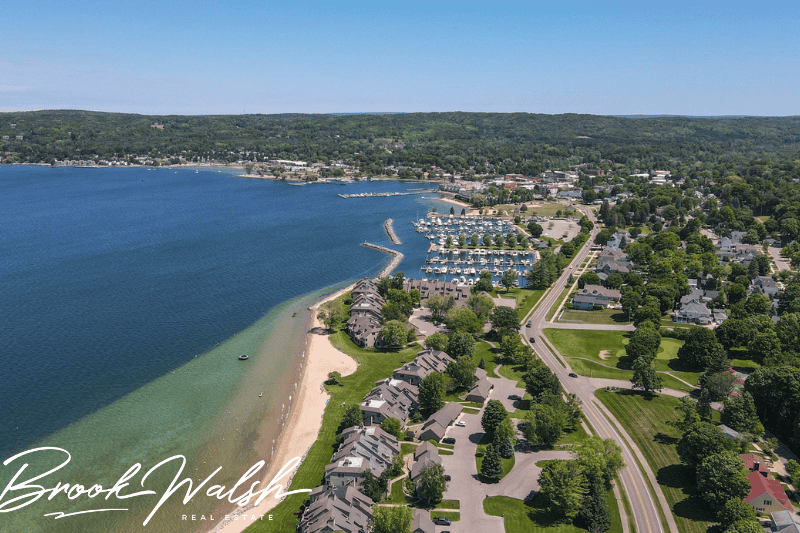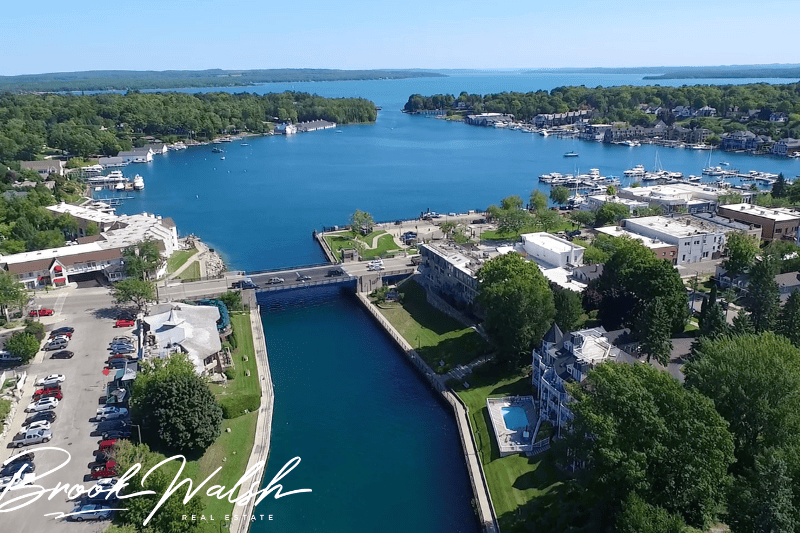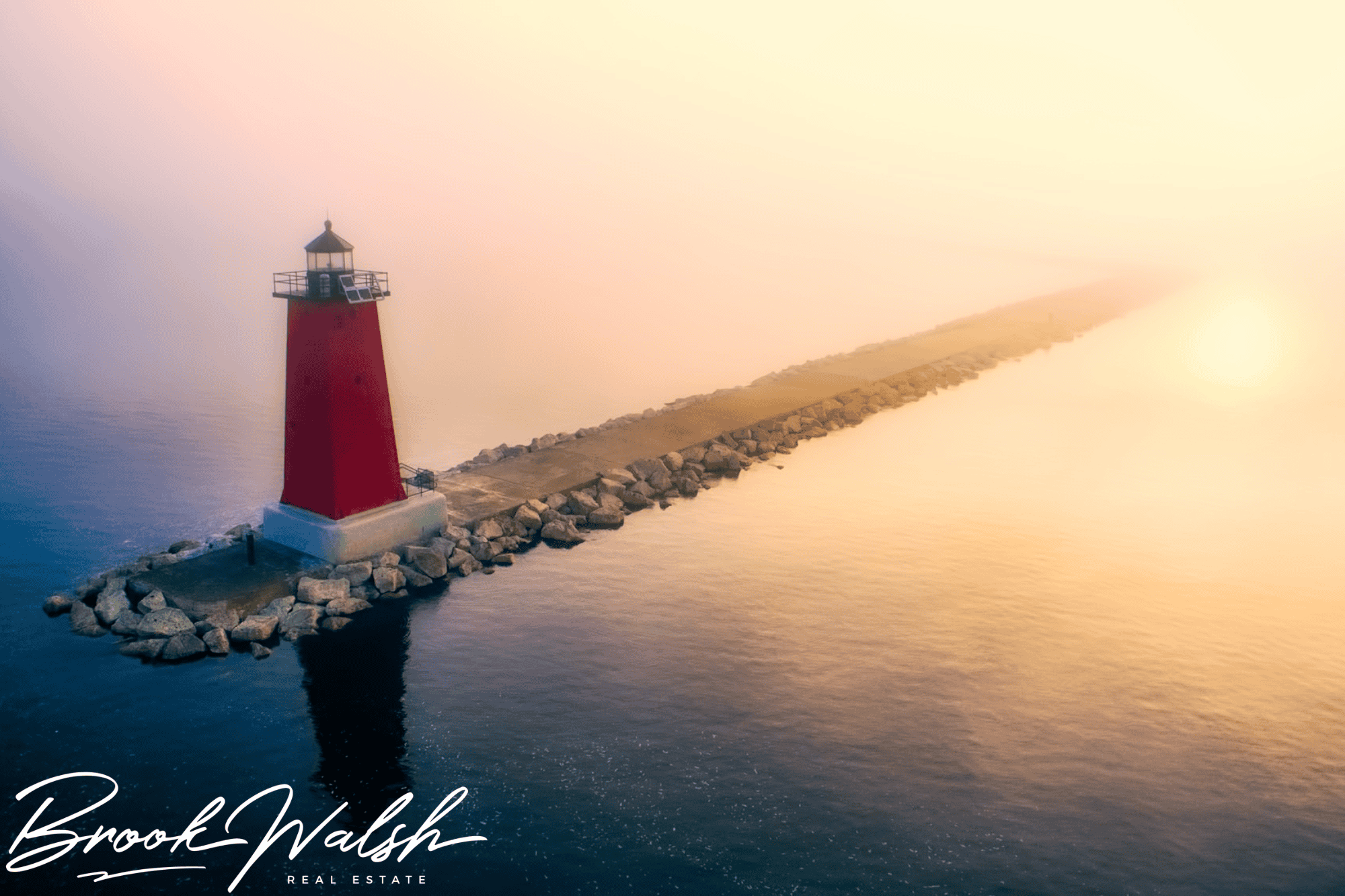The Fascinating History of Lake Charlevoix: A Journey Through Time
Discover the rich and fascinating history of Lake Charlevoix, from its glacial origins and indigenous roots to its transformation into a tourism hotspot.
Introduction to Lake Charlevoix

Tucked in the northwest region of Michigan's Lower Peninsula, Lake Charlevoix is one of the most captivating freshwater lakes in the United States. With over 17,000 acres of shimmering water, this lake isn't just beautiful—it's brimming with stories that span centuries. From ancient glacial formations to 20th-century steamboats, Lake Charlevoix has seen it all.
Renowned for its picturesque vistas, charming towns, and recreational activities, the lake holds a special place in Michigan’s natural and cultural heritage. It connects to Lake Michigan through the Pine River Channel in the city of Charlevoix, adding to its geographic significance.
Geological Formation of Lake Charlevoix
Long before human footprints ever graced its shores, Lake Charlevoix was carved by powerful glacial forces during the last Ice Age, approximately 10,000 years ago. As glaciers retreated, they left behind deep valleys that filled with meltwater, giving birth to what we now know as Lake Charlevoix.
This natural process created the unique finger-like shape of the lake, with its two main arms—the East Arm and the South Arm—each offering a different slice of the region’s geological narrative. Rolling hills, lush forests, and rich soil in the surrounding areas are all part of the lake’s ancient legacy.
Indigenous Peoples and Early Settlements
Long before European settlers arrived, the region around Lake Charlevoix was home to Native American tribes, notably the Odawa (Ottawa) people. These indigenous communities thrived on the lake’s abundant natural resources, relying on fishing, hunting, and seasonal farming.
Archaeological findings, such as stone tools and burial mounds, point to a sophisticated culture with deep spiritual and social structures. The tribes used the lake as a transportation route and a place of gathering, trade, and celebration, embedding it into their stories and traditions.
French Exploration and Fur Trade Era
In the 17th and 18th centuries, French explorers ventured into the Great Lakes region. Among them were fur traders and missionaries who documented and mapped this uncharted territory. Lake Charlevoix became an important node in the fur trade network due to its proximity to Lake Michigan.
French Jesuit missionary Pierre François Xavier de Charlevoix, for whom the lake is named, traveled the region in the early 1700s. Though he may never have visited the lake specifically, his influence loomed large as French and native cultures intermingled.
The Naming of Lake Charlevoix

Originally known as Pine Lake, this body of water was officially renamed Lake Charlevoix in 1926 to honor Pierre François Xavier de Charlevoix. Before that, the name had shifted several times in local use, reflecting both indigenous and European influences.
The renaming helped establish a strong cultural identity for the region, anchoring the lake in Michigan's broader historical narrative. The city of Charlevoix, situated at the lake’s outlet, further reinforced the name’s significance.
19th Century Development
By the mid-1800s, Lake Charlevoix was rapidly changing. The arrival of European-American settlers brought logging camps, sawmills, and farming. The rich pine and hardwood forests surrounding the lake were especially attractive to the booming lumber industry.
Towns such as Boyne City, East Jordan, and Charlevoix grew rapidly. Logging became the backbone of the local economy, with logs floated down the lake to mills or loaded onto ships for transport.
Railroads and Lake Charlevoix’s Rise
The late 19th century saw the arrival of railroads, which transformed the region’s connectivity. With tracks linking the lake to other parts of Michigan, Lake Charlevoix became accessible to tourists, traders, and new residents.
This infrastructural development played a critical role in the economic boom of lakeside towns. The ease of transportation allowed businesses to thrive, and recreational tourism began to take root.
The Steamboat Era on Lake Charlevoix
At the turn of the 20th century, steamboats became the lake’s primary means of transportation. These elegant vessels carried passengers, mail, and goods between towns and to connecting rail depots.
Steamboat lines such as the Ironton Ferry helped develop a sense of unity among scattered lakeside communities. Some of these historic ferries are still in operation today, offering a nostalgic glimpse into the lake’s golden age of travel.
Growth of Charlevoix and Boyne City

As industry and tourism flourished, so did the towns around the lake. Charlevoix, known for its stone buildings and fairy tale architecture, blossomed into a tourist destination. Boyne City, meanwhile, became an industrial hub with thriving paper mills and factories.
Public parks, theaters, and marinas were built to cater to residents and visitors alike, marking an era of prosperity and cultural expansion.
Early 20th Century to Post-War Changes
Like much of the country, Lake Charlevoix’s communities faced hardships during the Great Depression. Factories closed, and tourism dwindled. However, the resilience of the townspeople kept the spirit of the region alive.
World War II brought renewed purpose, with local industries supporting the war effort. Post-war, Lake Charlevoix experienced a rebirth, as returning soldiers and growing families sought vacation homes and tranquil getaways.
Recreational and Tourism Evolution
The post-war years marked the rise of Lake Charlevoix as a top-tier vacation destination in the Midwest. With improved highways and a growing middle class, families from across Michigan, Illinois, and beyond began flocking to the lake for summer retreats.
Fishing, boating, and camping became hallmarks of the Charlevoix experience. Seasonal cottages sprang up along the shoreline, and resorts flourished. The area offered a blend of rustic charm and upscale hospitality, with places like the Charlevoix Inn and Hotel Earl becoming icons of lakeside luxury.
Sailing regattas, local festivals, and waterfront concerts became regular events, strengthening the community spirit and drawing in crowds year after year.
Environmental Preservation Efforts
As the popularity of Lake Charlevoix grew, so did concerns about its environmental health. Over the years, local organizations and state agencies have implemented numerous conservation measures to protect the lake’s delicate ecosystem.
Initiatives included shoreline restoration projects, water quality monitoring, and invasive species control. Groups like the Lake Charlevoix Association have been instrumental in educating residents and visitors about sustainable practices.
Thanks to these efforts, Lake Charlevoix remains one of the cleanest and most beautiful lakes in Michigan, offering clear waters and thriving wildlife habitats.
Historic Events and Milestones
Lake Charlevoix has been the backdrop for many memorable moments. From centennial celebrations to weathering natural challenges, the lake has seen its share of history.
In 1970, the city of Charlevoix marked its 100th anniversary with a community-wide celebration highlighting its maritime roots. In more recent years, the lake has hosted heritage festivals and boat parades, keeping its cultural legacy alive.
Despite occasional floods and storms, the lake’s communities have shown remarkable resilience, coming together in times of need and celebration alike.
Lake Charlevoix in Arts and Literature
Lake Charlevoix’s enchanting scenery has inspired generations of artists, photographers, and writers. Its peaceful shores and vibrant sunsets have graced countless paintings and postcards.
Notably, the lake appears in the writings of Ernest Hemingway, who spent summers in northern Michigan. While not always mentioned by name, the atmosphere and setting of Lake Charlevoix can be felt in several of his Nick Adams stories.
Local artists continue to draw inspiration from the lake, and art festivals celebrating regional creativity are a staple of the cultural calendar.
The Role of Lake Charlevoix Today
Today, Lake Charlevoix continues to thrive as both a beloved natural wonder and a pillar of local life. It supports a diverse economy rooted in tourism, real estate, and outdoor recreation.
Modern amenities blend seamlessly with the area’s rich history, making it a place where past and present coexist harmoniously. Families return year after year to create lasting memories, just as others have for generations.
Whether you’re boating under the summer sun, exploring downtown Charlevoix’s boutiques, or simply enjoying a peaceful sunset, Lake Charlevoix offers a timeless charm that never fades.
Frequently Asked Questions

1. Who were the original inhabitants of the Lake Charlevoix area?
A. The area was originally inhabited by the Odawa (Ottawa) people, who used the lake for fishing, transportation, and cultural gatherings.
2. When was Lake Charlevoix renamed from Pine Lake?
A. It was officially renamed in 1926 to honor French missionary Pierre François Xavier de Charlevoix.
3. What industries helped grow towns around Lake Charlevoix in the 19th century?
A. Logging, sawmilling, and later railroads were key industries that led to the growth of towns like Boyne City and East Jordan.
4. What role did steamboats play in Lake Charlevoix’s history?
A. Steamboats were crucial for transporting people and goods across the lake during the late 1800s and early 1900s.
5. Are there any Hemingway connections to Lake Charlevoix?
A. Yes. Hemingway spent summers nearby, and the lake influenced some of the settings in his Nick Adams stories.
6. What is being done to protect Lake Charlevoix today?
A. Local organizations and state bodies are actively involved in conservation, shoreline management, and water quality monitoring.
Conclusion: Preserving the Past for the Future
Lake Charlevoix’s history is a rich mosaic of natural wonders, indigenous heritage, pioneering spirit, and community resilience. From its glacial beginnings to its present-day role as a cherished retreat, the lake has woven itself into the heart of Michigan’s identity.
As we move forward, it’s crucial to preserve not just the lake’s beauty, but also its stories. By honoring the past, supporting sustainable tourism, and protecting the environment, we ensure that future generations can continue to enjoy all that Lake Charlevoix has to offer.
Posted by Brook Walsh on

Leave A Comment